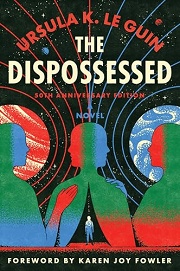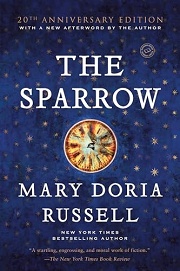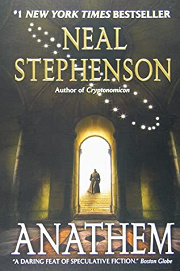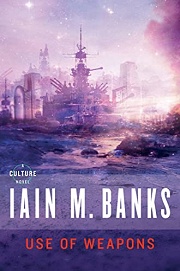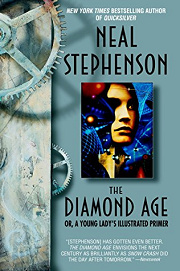Share your thoughts in a quick Shelf Talk!
The Dispossessed by Ursula K. Le Guin
Across two worlds divided by walls both physical and ideological, a brilliant physicist seeks to bridge more than just space. The Dispossessed is a profound, humane journey through utopia, revolution, and the price of freedom—an essential classic that lingers long after the last page.
Have you read this book? Share what you liked (or didn’t), and we’ll use your answers to recommend your next favorite read!
Love The Dispossessed but not sure what to read next?
These picks are popular with readers who enjoyed this book. Complete a quick Shelf Talk to get recommendations made just for you! Warning: possible spoilers for The Dispossessed below.
In The Dispossessed, did you enjoy ...
... social-science-driven first contact that probes culture, language, and belief?
The Sparrow by Mary Doria Russell
If you were drawn to how Shevek’s Odonian upbringing clashes and converses with A-Io’s norms—and how his physics is inseparable from sociology—then you’ll love how The Sparrow treats anthropology and linguistics as the real tools of exploration. Like Shevek’s culture-crossing journey from Anarres to Urras, Father Emilio Sandoz’s mission to Rakhat becomes a study in misread customs and unintended consequences. Where Shevek debates the Syndicate of Initiative and navigates Sabul’s gatekeeping over knowledge, Sandoz wrestles with institutional power and the ethics of understanding an alien society—until a devastating revelation forces him to rethink every assumption, much as Shevek ultimately rethinks who should control the ansible.
... big-idea debates about science, society, and responsibility?
Anathem by Neal Stephenson
Loved the philosophical spine of The Dispossessed—Shevek’s arguments with Sabul and Bedap about freedom, property, and the purpose of knowledge? Anathem plunges you into a monastic scientific culture where theorists argue like Shevek at a public symposium. As Shevek weighs whether to give the ansible to any single power, Erasmas and his colleagues confront who gets to steward dangerous ideas. The blend of thought experiment, political tension (echoing Shevek’s exposure to Urrasti realpolitik), and a climactic choice about sharing knowledge scratches that same philosophical itch.
... a time-scrambled structure that reframes political and personal choices?
Use Of Weapons by Iain Banks
If the alternating Anarres/Urras chapters and time jumps in The Dispossessed hooked you—how each strand reinterprets Shevek’s motives, from the wall-building childhood to the Urrasti protests—then Use of Weapons delivers a masterclass in non-linear revelation. Its interleaved timelines peel back a protagonist’s past deeds the way Le Guin’s structure reframes Shevek’s decision to broadcast the ansible. The payoff lands with the same retrospective shock: politics and morality look different once you finally see the hidden hinge in the story.
... utopian–capitalist contrast and the fight over scarcity, property, and power?
Walkaway by Cory Doctorow
If the clash between Anarres’s gift economy and A-Io’s class-stratified wealth grabbed you—especially Shevek witnessing luxury built on exploitation and the state’s violent crackdown on dissent—then Walkaway will resonate. Like the Syndicate of Initiative’s challenge to gatekept knowledge, walkaways use open tech and communal norms to sidestep ownership, provoking reprisals from the rich. The debates you saw between Shevek, Bedap, and the Odonian committees echo here in arguments over abundance, reputation, and how to build a society that resists turning into Urras.
... the moral responsibility of disseminating transformative technology?
The Diamond Age by Neal Stephenson
If Shevek’s final choice—releasing the ansible to everyone rather than handing it to the Ioti state—was your favorite beat, The Diamond Age explores a parallel ethical dilemma: who should control world-changing tech? As Shevek resists Sabul’s hoarding and A-Io’s co-option, engineers and patrons in The Diamond Age battle over a nanotech primer that could uplift or entrench hierarchy. The tension between open knowledge and elite control mirrors Shevek’s decision to broadcast his work, and the consequences ripple across class lines just as starkly as on Urras and Anarres.
Unlock your personalized book recommendations! Just take a quick Shelf Talk for The Dispossessed by Ursula K. Le Guin. It’s only a few questions and takes less than a minute.
